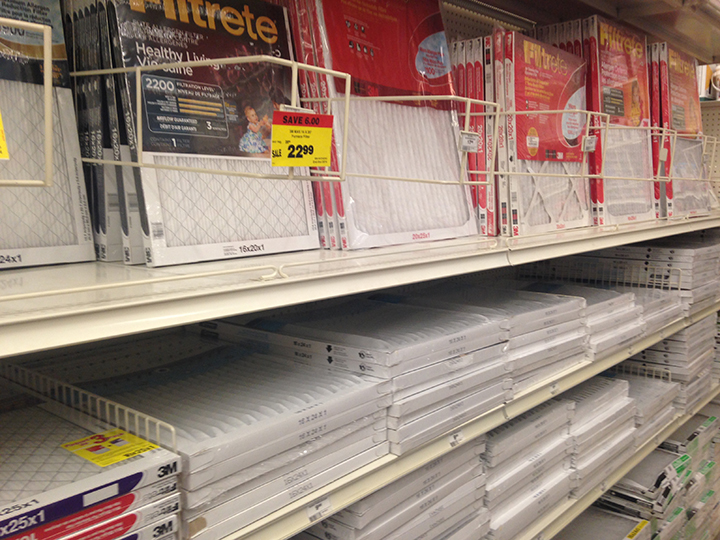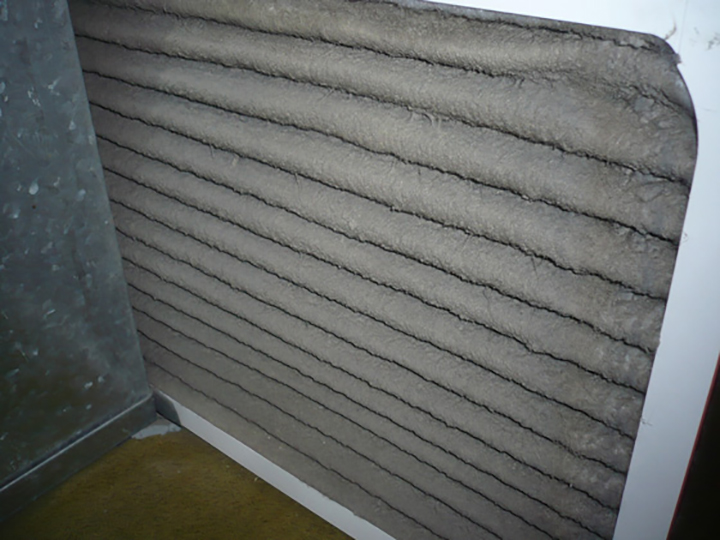TORONTO – If you’re like most people, you probably don’t give your furnace much thought as long as it’s keeping you warm in the winter and cool in the summer. But in order to keep it working to its optimal performance — and help prevent a possible malfunction — you need to either change or clean your furnace filter on a regular basis.

Sounds simple, but in reality there are so many options for furnace filters that choosing the wrong one can do more damage to your furnace than good and could potentially cause your furnace to break down.
How a furnace works
A traditional forced-air furnace draws air in via return ducts, warms it over a heat exchanger then, with the help of a blower fan, pushes the heated air through a series of ducts that branch off into rooms throughout your home. The furnace runs until the temperature inside reaches your desired thermostat setting. (If you have whole home air conditioning the process is similar with the air being cooled in the summer by an outdoor compressor unit and a series of coils inside your furnace).
WATCH: Repair Clinic explains how a furnace works
What a furnace filter does
The main purpose of a furnace filter is to protect the blower fan from all the dust, hair and other gunk the return duct pulls in. While it will also help the quality of your inside air (as it is removing contaminants from being recirculated), its job is not to actually clean your air as many people believe.
How filters are rated
Furnace filters are rated using the minimum efficiency reporting value (MERV). MERV ratings range from 1 to 16. The higher the rating the more particles the filter can remove (check out the infographic below — courtesy airfilterbuy.com — to get an idea of what each MERV rating can handle). Higher rated filters allow less air to flow through though and can force your furnace to work harder and possibly malfunction. A MERV rating between eight and 11 is adequate for most homes. To be safe, you should check if your furnace manufacturer has a maximum MERV rating your model of furnace can use.
Some home improvement centres, such as Home Depot, use their own rating system on products sold in their stores. These ratings are similar to the MERV scale but do vary slightly. It’s best to confirm what their rating converts to on the MERV scale to ensure you’re using a filter safe for your furnace.
- Gas prices surge in some parts of Canada. What’s causing pain at the pumps?
- ‘She gets to be 10’: Ontario child’s heart donated to girl the same age
- Bird flu risk to humans an ‘enormous concern,’ WHO says. Here’s what to know
- Buzz kill? Gen Z less interested in coffee than older Canadians, survey shows
Filter types
The most common type of furnace filter is the disposable pleated kind. These come in a range of standard sizes and ratings. Pleated filters are constructed out of paper and polyester and do a good job at filtering most household particles and allergens. The price of these filters varies from a couple of dollars all the way into the $30 – $40 range depending on the brand, size and rating of the filter. Pleated filters should be checked monthly for blockages and replaced on average every 90 days.
Disposable fibreglass filters are the cheapest filter on the market. They have an almost spider web appearance and are most often blue in colour. They come in many standard sizes, but are generally more flimsy and have lower ratings than pleated filters. Due to their inferior quality, disposable fibreglass filters should be checked and replaced more frequently than pleated filters.
FROM HGTV CANADA: Firerating & Fireproofing Your Furnace
Permanent reusable filters (also referred to as washable filters) are constructed with either a solid aluminum or plastic frame and are more efficient than a disposable filter. These filters can be vacuumed off and cleaned with water. They come in a range of sizes and ratings, and while more costly to purchase, they last an average of 5 years if maintained with a proper cleaning at least every 90 days.
A note about electrostatic filters
Both disposable and washable filters come in electrostatic versions. Electrostatic filters self-charge themselves as air passes through them. This process helps trap small particles, making them good for homes with pets or people who smoke inside. Check your furnace manual to ensure you can safely use electrostatic filters.
Filter sizes
Furnace filters are sized by thickness (depth), height and length. The most common thickness is 1”, with 4” also being a popular choice on larger systems. Height and length combinations range from 10”x10” all the way to 30”x30”. The most common sizes are 14”x25”, 16”x20”, 16”x25”, 20”x25”, and 25”x25”. To find out what size filter your furnace uses, remove and check the old filter (the size should be written on the frame of the filter) or refer to your furnace manual.
NOTE: If your furnace uses a custom size filter speak with your furnace manufacturer to find out where you can purchase replacement filters.
Replacing your filter
Once you know what size filter you require and what MERV rating you can use, and have chosen what filter type to purchase, it’s time to replace the old filter.
NOTE: To ensure your furnace doesn’t kick in while you’re changing your filter it’s recommended you turn your furnace off while swapping out the filter.
Open the filter compartment door (this will be between the air intake and furnace itself) and slide the old filter out and properly dispose of it (it will be dusty so try to place it in a bag as quickly and gently as possible). If you have a permanent filter, vacuum it off before rinsing it thoroughly with water. Allow it to completely dry before putting it back inside your furnace.
WATCH: Liberty Homes demonstrates how to change a furnace filter
If you haven’t changed your filter in a long time and notice lots of hair or dust around the filter opening, it’s highly recommend you vacuum around the outside of the furnace and inside the filter opening before replacing the filter.
Whether you’re using a disposable or washable filter it will have an arrow on it showing the direction of the airflow. The arrow needs to face the furnace side of the compartment when you slide it in. This is important to ensure your filter is working properly.
Once you have your filter replaced turn your furnace back on. Check your filter monthly and clean your washable filter or replace your disposable filter every 90 days.
NOTE: If you’re not comfortable cleaning or changing your own furnace filter contact an HVAC professional in your area for assistance.
Have a home-related question? Let us know in the comments below or on our Facebook page.




Comments